New Concepts of Death to Fit Needs of
Transplant Doctors
Transplant Doctors
Don’t Give Your Vital Organs - Part I
Randy Engel
Randy Engel
Many readers of this site, I think, are acquainted with my pro-life credentials. I was privileged to have come into the Pro-life Movement at the ground floor in the early 1960s. My initial interest was in federal domestic and foreign population control programs and later eugenic abortion, sex initiation programs in public and parochial schools, human embryo and fetal experimentation, and euthanasia.
In 1972, I founded the U.S. Coalition for Life as an international pro-life research agency and six years later, with the assistance of the Dr. Jerome Lejeune of the University of Paris, I established the International Foundation for Genetic Research, popularly known as the Michael Fund, as the prolife alternative to the March of Dimes. I have written three books dealing with pro-life issues.
Given this background, one would think I should have known the truth about unpaired vital organ transplantation as a form of euthanasia, a form of killing, but the sad truth is that while I should have known, I did not know. And I would have remained in my state of ignorance had it not been for Dr. Paul Byrne, an Ohio neonatologist and co-founder of the Life Guardian Foundation, who removed the scales from my eyes and permitted me to see vital organ transplantation for the evil that it is. (1)
The organ donor industry
Like the abortion industry, the vital organ transplantation industry rests on the utilitarian principle that the end justifies the means. Like the abortion industry, its nexus is hard, cold cash – billions in hard cold cash. The only thing harder and colder that the cash is the hearts of the surgeons and staff who, having come to the knowledge that they must kill a living donor in order to retrieve a healthy organ for a recipient fellow human being, continue to engage in this medical butchery, and rationalize said killing as justifiable on the grounds that that the excised organ will be used to save the life of another living human being.
Pro-lifers need to make vital organ transplantation a key right to life issue because it is a violation of the Natural Moral Law and God's Commandment – thou shalt not kill.
Paired vs. unpaired organ transplants
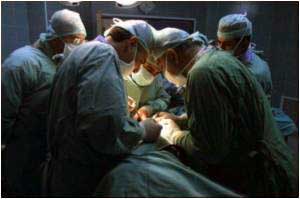 |
By the mid-1960s, following numerous failed attempts at obtaining viable unpaired organs like the heart from fresh cadavers or corpses, it became clear to transplant surgeons that healthy vital organs for transplantation can only be gotten from a living donor – a beating heart can only be obtained from a living human being.
Christian Barnard's dark secret
Enter South African surgeon Christian Barnard who had received part of his post graduate medical studies in the United States at the University of Minnesota. It was here that he first met Dr. Norman Shumway, who did much of the pioneering research leading up to the first human heart transplant. Barnard performed the first kidney transplant in South Africa in October 1967, but his primary interest was cardiac surgery. He wanted to do a human heart transplant.
In November 1967, Barnard found a 54-year-old patient by the name of Louis Washkansky who agreed to participate in the medical experiment as a heart recipient.
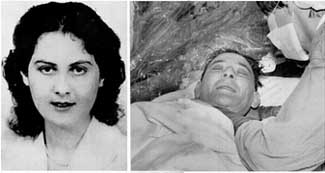 |
The immediate problem facing Barnard was that, although Denise's brain was damaged, her heart was healthy and beating, indicating she was still alive by traditional whole body standards. So what would make her heart stop so that it could be legally excised? Barnard later told reporters that he had waited for her heart to stop naturally before cutting it out, but this was a lie. It was not until 40 years later that the public learned the truth.
At Marius's urging, after his brother had cleaved open the chest cavity, Christian had injected a concentrated dose of potassium to paralyze Denise's heart, thus rendering her "technically" dead. (2) Everything had already been prepared so Bernard proceeded to quickly cut the major vessels, cool the heart and sew it into the recipient. Denise was alive before her heart was excised. She was truly dead after it was cut out of her body.
Three days after the Barnard murder, not to be outdone by a doctor in South Africa, Dr. Adrian Kantrowitz, a surgeon at Maimonides Medical Center in Brooklyn cut a beating heart out of a live 3-day-old baby and transplanted into an 18-day-old baby with heart disease. At the end of the day both babies were dead.
A redefinition of death
The controversy following the Kantrowitz killings was instrumental in the formation of the Harvard Medical School ad hoc Committee to study "brain death" as the new criteria for death.
The obvious conundrum facing transplantation surgeons was that organs taken from cadavers do not recover from the period of ischemia (loss of blood supply to organs) following true death. After circulation and respiration has stopped, within 4 to 5 minutes the heart and liver are not suitable for transplantation. For kidneys the time is about 30 minutes.
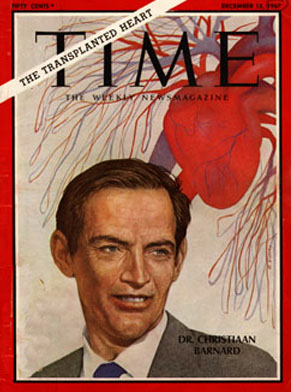 |
In August 1968, the Journal of the American Medical Association published "A Definition of Irreversible Coma: Report of the Ad Hoc Committee of the Harvard Medical School to Examine the Definition of Brain Death." (3) No authors were listed. (4)
The Harvard Committee cited two reasons for establishing "brain death" as the new criteria for death. The first was the problems surrounding the use of resuscitation and other supportive measures to extend the life of severely injured persons. The second reason was "obsolete criteria for the definition of death can lead to controversy in obtaining organs for transplantation."
It should also be noted that the criteria of "brain death" did not originate or develop by way of application of the scientific method of observation and hypothesis followed by verification. The Committee presented no substantiating data either from scientific research or case studies of individual patients. The Committee did not determine if irreversible coma was an appropriate criterion for death. Rather, its mission was to see that it was established as a new criterion for death. In short, the report was made to fit the already arrived at conclusions.
The myth of brain death
Biologically speaking, the body is composed of cells, tissues, organs and eleven systems, including three major vital systems. No one organ or system controls all other organs and systems. Interdependent functioning of organs and systems maintains unity, homeostasis, immune defenses, growth, healing and exchange with environment, e.g., oxygen and carbon dioxide. It might be well to recall at his point that that the human embryo does not develop a brain until he is 6 weeks old, yet he is a living human being from the moment of conception.
We all recognize the signs of life in a human being including temperature, pulse, blood pressure, respiration, and reflexes. We also recognize the signs of death including the lack of breathing, heartbeat, pulse and blood pressure. Once the soul has departed from the body, what remains is a corpse - empty, cold, blue, rigid and unresponsive to all stimuli. Ventilation will not restore respiration in a corpse. A pacemaker can send a signal, but it cannot initiate the heartbeat in the corpse. Healing never occurs in a patient that is truly dead. Certitude is the general putrefaction of the body.
Using these traditional criteria for death, it is clear that the "brain-dead" patient is truly alive. His body is warm and flexible. He has a beating heart, normal color, temperature, and blood pressure. Most functions continue, including digestion, excretion, and maintenance of fluid balance with normal urine output. He is given intravenous feedings, blood transfusions, antibiotics, and other medications necessary to keep him in tip-top shape for the transplantation operation. There will often be a response to surgical incisions. Given a long enough period of observation, he will show signs of healing and growth. If a child, he will begin to go through the stages of puberty.
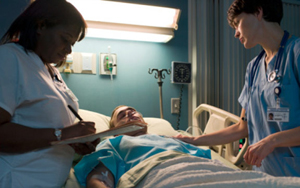 A potential donor is tested and pronounced 'brain dead': a new profit for the hospital |
Shortly after the Harvard Committee report was published in JAMA, "brain death" was adopted as the new standard of death in most hospitals, including Catholic hospitals, in the U.S. By 1978, 30 disparate sets of criteria for "brain death" were published - each set of criteria tending to be less strict than previous sets. The liberal mass media began to adjust its language to accommodate the new "reality" by referring to a "brain dead" donor as a "beating heart cadaver," "a ventilated corpse," or the "living dead" implying a person could be alive and dead at the same time. (5)
One of these new definitions of death is "cardiac death" which is used when a potential organ donor does not meet the criteria for "brain death," but he has sustained certain injuries or has an illness suggesting that death will soon occur. Under the cardiac criteria, a patient can be declared dead on the basis of "irreversible (impossible to reverse) cessation of cardiac function," and his organs harvested for transplantation.
The unanswered question is: How is it possible to declare that the damage to the donor's heart was irreversible, meaning impossible to reverse and that the heart had lost all its functions, and then have it work perfectly well after it has been transplanted to a recipient? The answer points in the direction of checkbook euthanasia. Transplantation programs are highly desirable to hospitals as they are high profit programs. Giving vigorous CPR to the "living dead" is not as cost effective as excising and selling his organs.
1. See http://lifeguardianfoundation.org/missionstatement.html.
2. Donald McRae, Every Second Counts: The Race to Transplant the First Human Heart, New York, Putnam, 2006, p. 335.
3. See http://jama.ama-assn.org/cgi/content/summary/205/6/337.
4. The Ad Hoc Committee included Henry K. Beecher, MD, chairman; Raymond D. Adams, MD; A. Clifford Barger, MD; William J. Curran, LLM, SMHyg; Derek Denny-Brown, MD; Dana L. Farnsworth, MD; Jordi Folch-Pi, MD; Everett I. Mendelsohn, PhD; John P. Merrill, MD; Joseph Murray, MD; Ralph Potter, ThD; Robert Schwab, MD; and William Sweet, MD.
5. In The City of God, Book XIII, Chap. 11, St Augustine addresses the question — Can one be both living and dead at the same time? He replies in the negative, that there is no third state — one is either alive or dead. A man may be dying but he is still alive until he is dead and his soul is separated from his body.
Well Prepared Propaganda to Get Organs
from the Victims’ Families
Randy Engel
Although organs can be taken from living persons of all ages, the most desirable candidates for vital organ transplantation are young adults between the ages of 16 and 30, simply because they generally have the healthiest organs. Teenagers are especially prone to risk-taking behaviors, and the organ donor industry has acknowledged this fact by targeting them as potential organ donors using special programs in high schools and State auto license bureaus to encourage young people to "give the gift of life" without providing them with informed consent on the true nature of organ transplantation.
A healthy beating heart or other vital organ brings an average of $24,000 and the body of a 'brain dead' donor, an average of $70,000. In a single year, recipients of vital organs or their insurance companies will pay out over $3 billion to the organ donor industry. It should be noted that in addition to major organs, there is a large international market and black market for other spare body parts provided by hospitals, funeral parlors, morgues and crematoriums. A single body can provide several hundred people with organs, tissues, corneas, ligaments, etc. One thing, however, is clear. Donor families do not receive any monetary benefit from their ‘gift of life.’
The role of the designated requester
The federal government has been deeply involved in promoting organ donation and there are currently at least 63 donor agencies that have been approved by the federal government to procure vital organs for transplantation. These donor agencies have in turn spawned a huge bureaucratic network that drives the organ donor industry. Among the key players in this bureaucracy is the "designated requester."
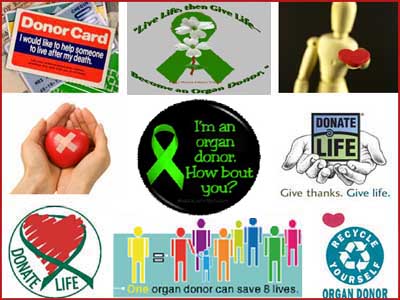 |
Studies have shown that these professional ‘designated requesters’ have a high success rate for obtaining permission for organ donations from grieving family members. This is because they are trained to ‘sell’ the concept of organ donation, using emotionally-laden phrases such as ‘giving the gift of life,’ ‘your loved one's heart will live on in someone else,’ and other similar platitudes, all empty of true meaning.
According to Bernice Jones of the Life Guardian Foundation:
The script delivered to the ‘donor's’ family has been well orchestrated and rehearsed. ...The ‘request,’... has been painstakingly developed through a process in which actors/actresses have been employed to simulate the shock, grief and despair of the patient's loved ones! ...Mrs. Jones can speak with authority because her young son, Brandon, had suffered an accidental gunshot wound to the head and was declared ‘brain dead’ upon arrival at the hospital, and because he had signed on as an organ donor on his driver's license, was immediately prepared for the removal of his organs which was accomplished some 19 to 20 hours later. (2) At this point, Brandon Jones was truly dead.
Understand, in the midst of a sudden and tragic accident when the patient's loved ones are severely stressed and traumatized, [they] are approached and the ‘request’ is made! Under no other circumstance is it deemed an ‘appropriate time’ for a patient's loved one to be forced to make a decision under such duress! ...
Under the sterile, polished and gleaming exterior of the ‘gift of life’ is an ugly, horrifying truth!
Without the ‘knowledge and consent’" of the patient or the patient's family members and loved ones, the ICU has been transformed into a keeper of organs! The ‘patient,’ having committed no crime, is condemned to death! The ICU ward is, in effect, death row as the ‘organ donor’ undergoes hours, sometimes days, of torturous treatment utilized as a container of "spare parts!" ... until such time a convenient death has been orchestrated and designated! (1)
Do you carry an organ donor opt-out card?
No human being should have to face the ignominious death that Brandon Jones experienced, and the ongoing living hell the Jones family was forced to endure once the official hospital records revealed the truth - that Brandon was truly alive and not dead after the accident, and in fact, had fought to live, up to the very time he was dissected on the operating table.
 |
To be forewarned is to be forearmed.
Every American, especially young adults, needs to carry an opt-out card signed by two witnesses in their wallet or purse .... And as the familiar ad says .... Don't leave home without it. Your life or that of your loved one may depend upon it.
1. The text of Bernice Jones' statement in defense of Randy Engel's criticism of vital organ transplantation is available here or from the author at rrvte61@comcast.net.
2. "Bernice's Story : In the Presence of Evil" at http://lifeguardianfoundation.org/
3. Opt-out medical directive cards are available for $2.00 each from the U.S.C.L., Box 315, Export, PA 15632. Please indicate which format, Catholic or Protestant, you would like.
